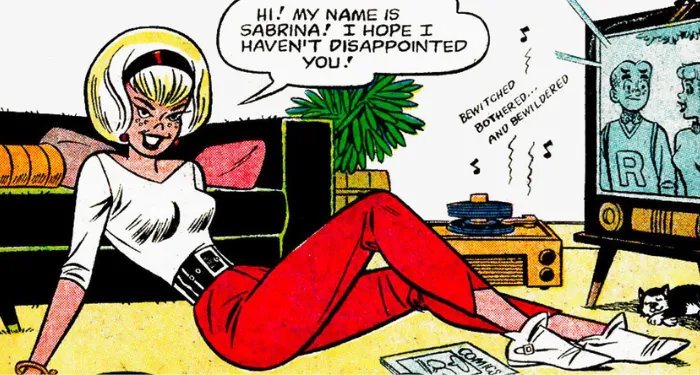
7 of the Best Witches in Comics
It’s October, and that means it’s the season of the witch! Well, okay, every month is the season of the witch for many of you — and for comics. The funnybooks abound with witches both good and wicked (and sometimes both at the same time), and I’ve rounded up a few of my faves for you.
Witches occupy an interesting place in comics history. As I’ve talked about before, the Comics Code Authority, the comic book industry’s internal censorship board, came down particularly hard against horror comics, as they were seen as being especially harmful to children — well, and other publishers were trying to drive the wildly popular EC Comics, who specialized in horror, out of business.
From 1954 to 1971, the Code explicitly banned “the walking dead, torture, vampires and vampirism, ghouls, cannibalism, and werewolfism.” Witches aren’t on that list, and in fact, every witch but one listed below debuted in the ’60s when the Code was at its strongest. Still, the scariness of witches, both in art and writing, was way toned down for a decade and a half — and I do have to wonder if the prevalence of witches in comics was in part because creators couldn’t use any other horror elements to frighten the kiddies.
Or maybe people have just always liked witches. Who can say?
Without further ado, here are seven of the best witches in comics:
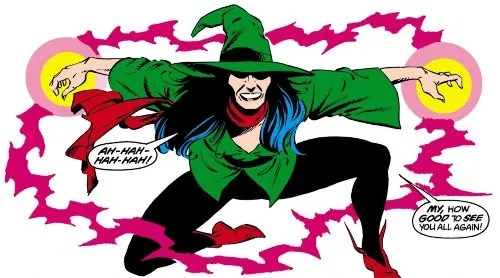
Enchantress
DC and Marvel both have characters by this name, but I want to talk about DC’s: June Moone, an ordinary woman who is possessed by a (usually) malevolent magical entity that transforms her into the Enchantress. June has been both villain and antihero, serving on Shadowpact, the Suicide Squad, and Justice League Dark. What I like about her is that she is just as terrified and miserable as any of us would be if we were sometimes taken over by an evil being with a predilection for electric green (relatable!), but she still tries to fight the good fight as much as she can.
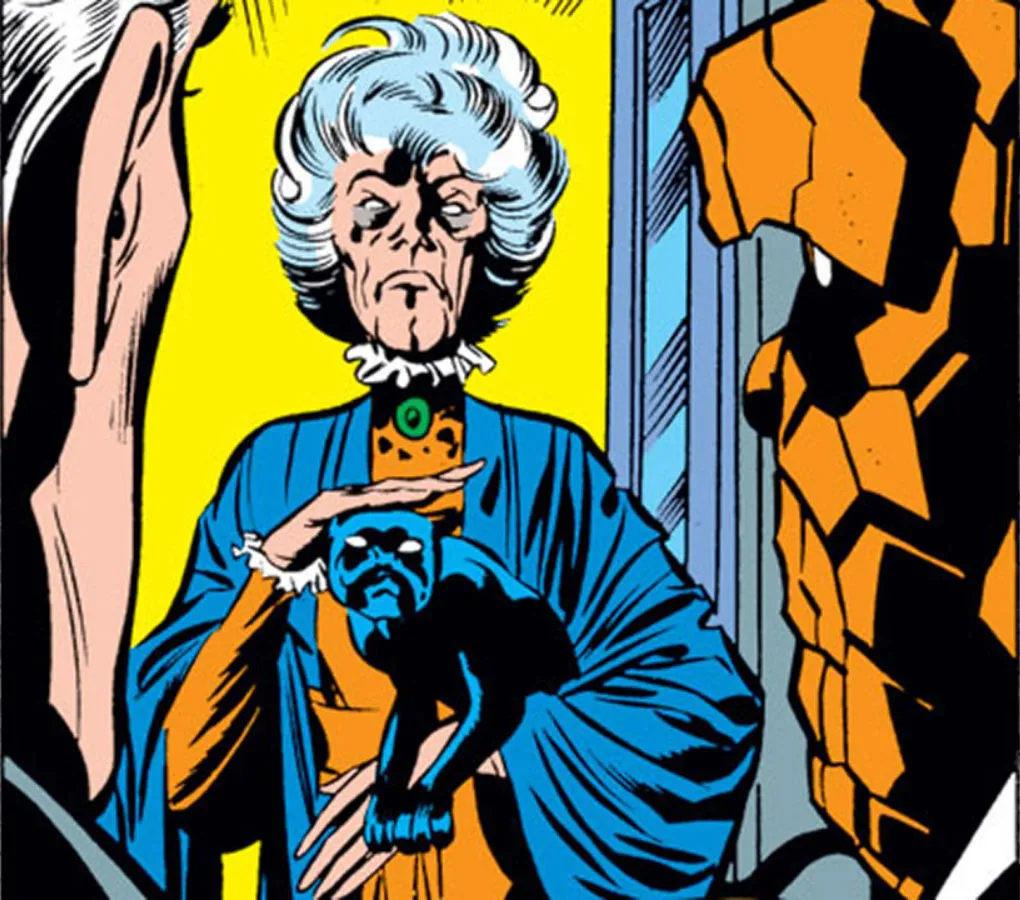
Agatha Harkness
Forget WandaVision, as fun as “Agatha All Along” was. The Agatha of the comics is an old, old, old woman (she survived the Salem Witch Trials) who was originally introduced in Fantastic Four when she became the nanny to Franklin Richards, the cosmically powerful son of Mr. Fantastic and the Invisible Woman. The comics teased readers with her witchy aesthetic for a long time before her full power was unleashed in defense of her charge — and there was a lot of it to unleash. As one of the most powerful magic users in the Marvel Universe, Agatha went on to mentor Scarlet Witch. I like Kathryn Hahn as much as everyone else, but there’s something to be said for an old lady kicking ass in the name of justice.
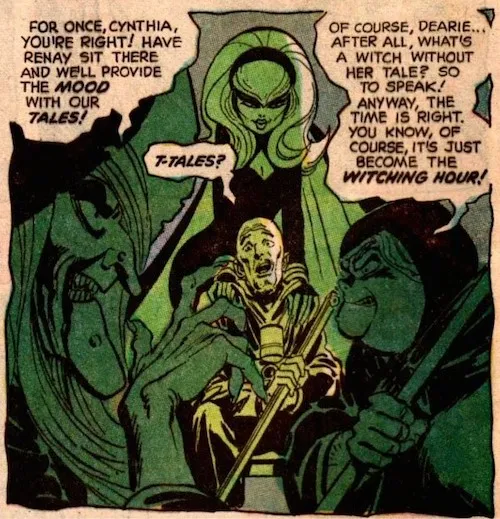
The Weird Sisters/The Three
From the late ’60s through the ’70s, as the Comics Code weakened, DC published a number of horror anthologies, each one “hosted” by recurring characters who walked the line between funny and scary. The Witching Hour was hosted by three witchy sisters: Mordred, Mildred, and Cynthia — obviously designed to evoke the witches from Macbeth as well as the Maiden, Mother, and Crone; the Fates; the Norns; and any number of other triple goddesses from various mythologies. Like their fellow horror hosts Cain and Abel, the Three were later repurposed by Neil Gaiman for Sandman, which is how they’re best known today.
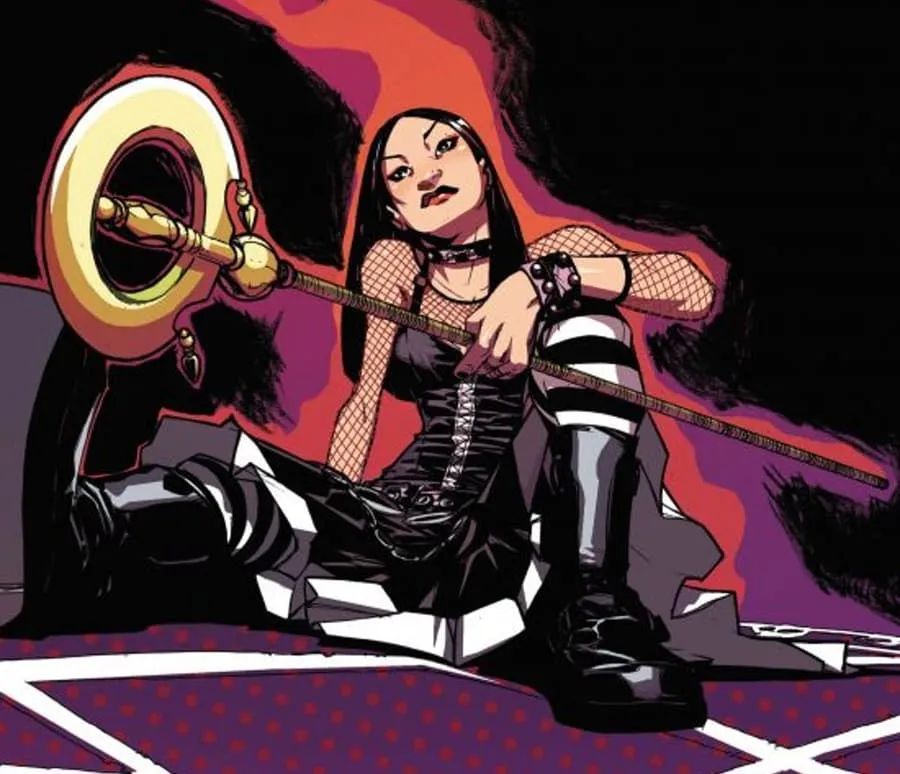
Nico Minoru
This one is for the goths. (Okay, this whole list is for the goths.) When Nico discovered that her parents were supervillains, she ran away — along with the rest of her first team, fittingly called the Runaways. Like her parents, Nico is a powerful wizard and eventually emerges as a capable leader of others. She’s also a fan-favorite LGBTQ+ character; after spending a number of years coming to terms with her sexuality, she eventually realized that she was bi and began dating her teammate, Karolina Dean.
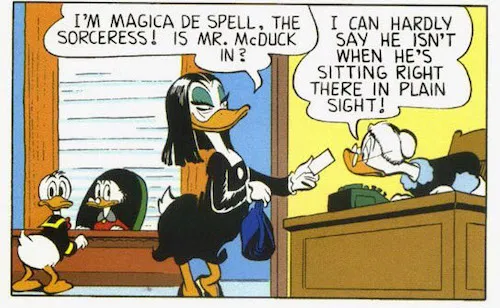
Magica De Spell
You know I had to put a duck in here. Magica De Spell is a sorceress who is constantly trying to steal Scrooge McDuck’s Number One Dime, the first coin he ever earned, which she believes holds mystical power. This usually turns out very badly for her. My fellow American elder millennials who are familiar with June Foray’s unhinged Natasha Badinoff-esque voice for her in the 1989 DuckTales series may be surprised to learn that she’s Italian and that Carl Barks originally based her on Sophie Loren. In the Italian comics, fittingly, she has a large extended family, though additional allies haven’t helped her yet in getting her hands (wings?) on the Dime.
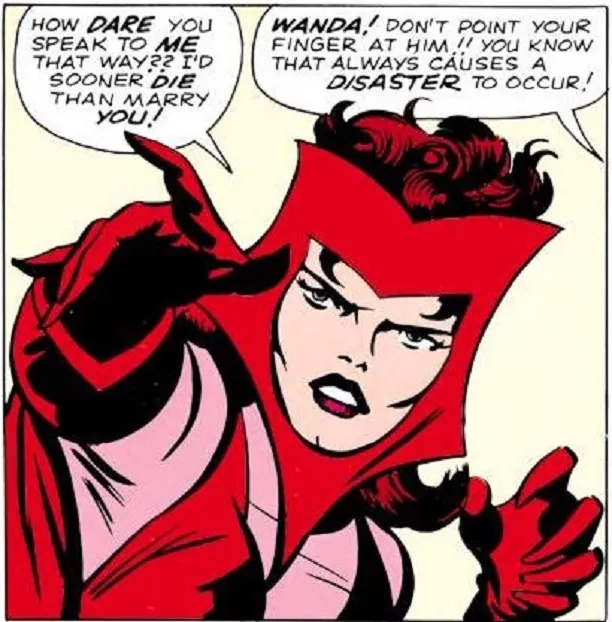
Scarlet Witch
Oh, Wanda. In many ways Wanda Maximoff is the embodiment of life as a superhero comics character, particularly a female one written overwhelmingly by men. She’s been a villain and a hero (and a villain again, and a hero ago, and…). She’s been a mutant and not a mutant. She’s been Jewish and Romani and then had her heritage erased. She’s been Magneto’s daughter, the Whizzer’s daughter; god only knows whose daughter. She’s been a mother and then had her children erased from existence, shattering her delicate ladybrain into madness (SIGH). And yet, through all the upheaval, contradictory continuity, and sexist writing, two things remain true: 1. she’s fascinating to read about, and 2. as they say in the comics, she will &@%$ you up.
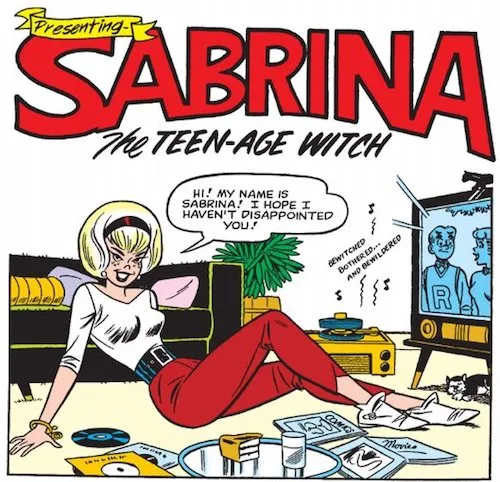
Sabrina Spellman
Could there be any doubt? Archie’s Sabrina is by far the most famous and beloved witch in comics history and has been for pretty much all 61 years of her existence. On top of her hundreds of comics appearances, she’s inspired two live-action TV shows, multiple cartoons, made-for-TV movies, and a series of novels. It’s funny to think about it now, but part of her original charm was her novelty: back when Sabrina debuted, the idea of a young, pretty witch was unusual. A pretty girl in comics? What will they think of next?!
Looking for more witchy comics? Check out 10 of the Best Witch Manga and 10 Comics About Witches and Other Dark Magical Creatures.











